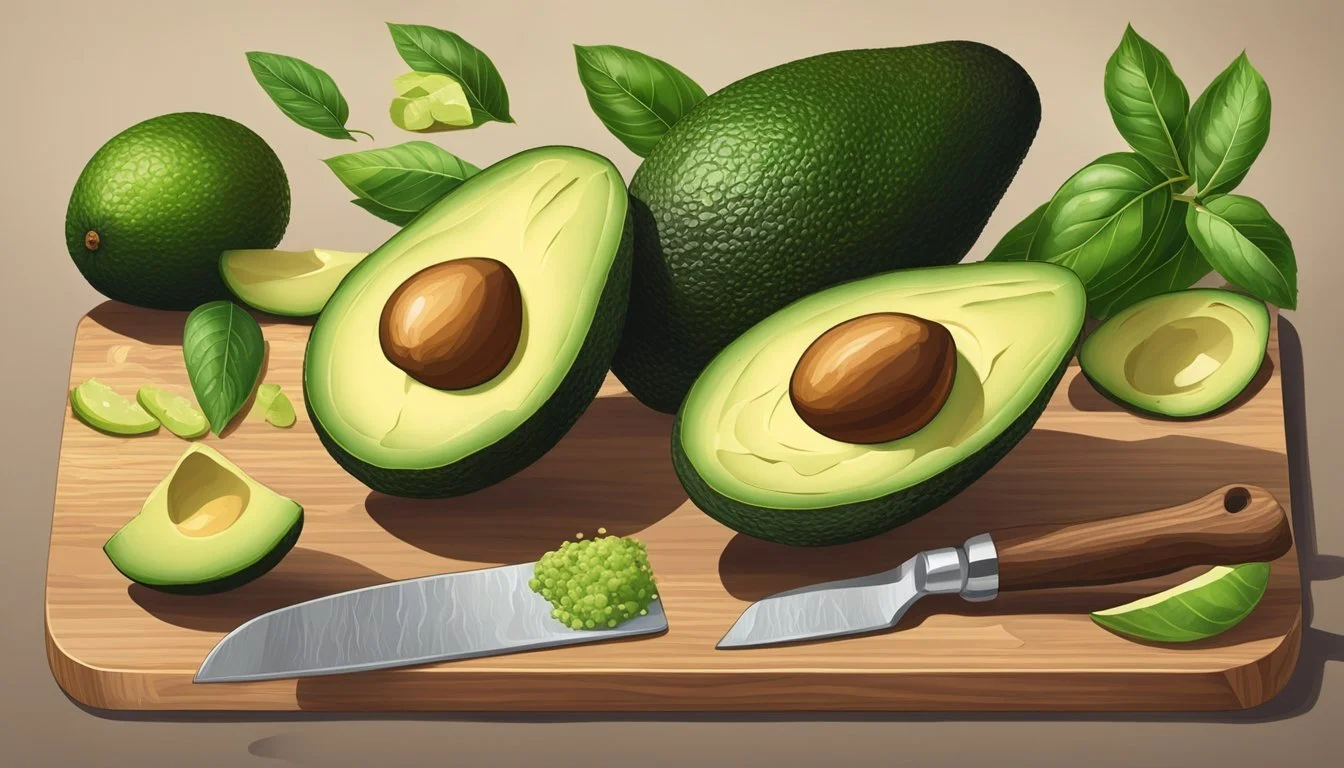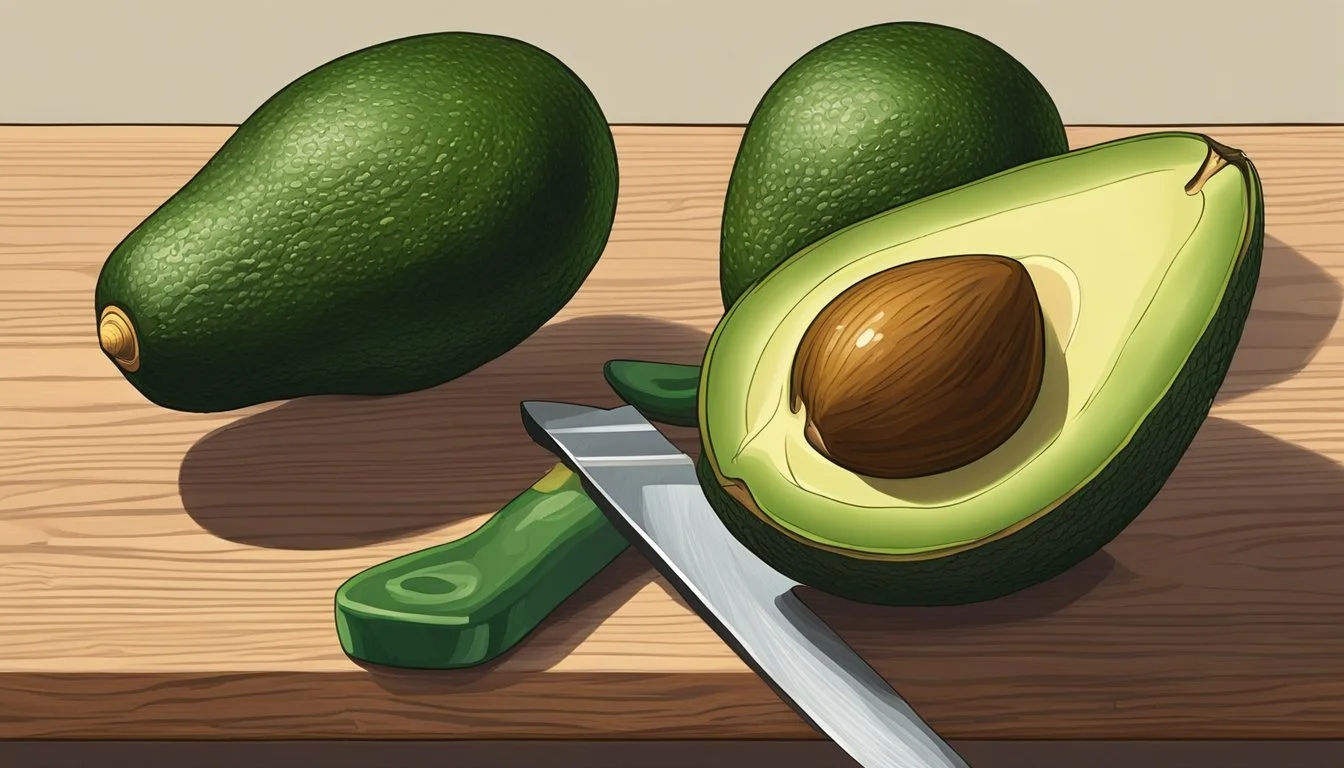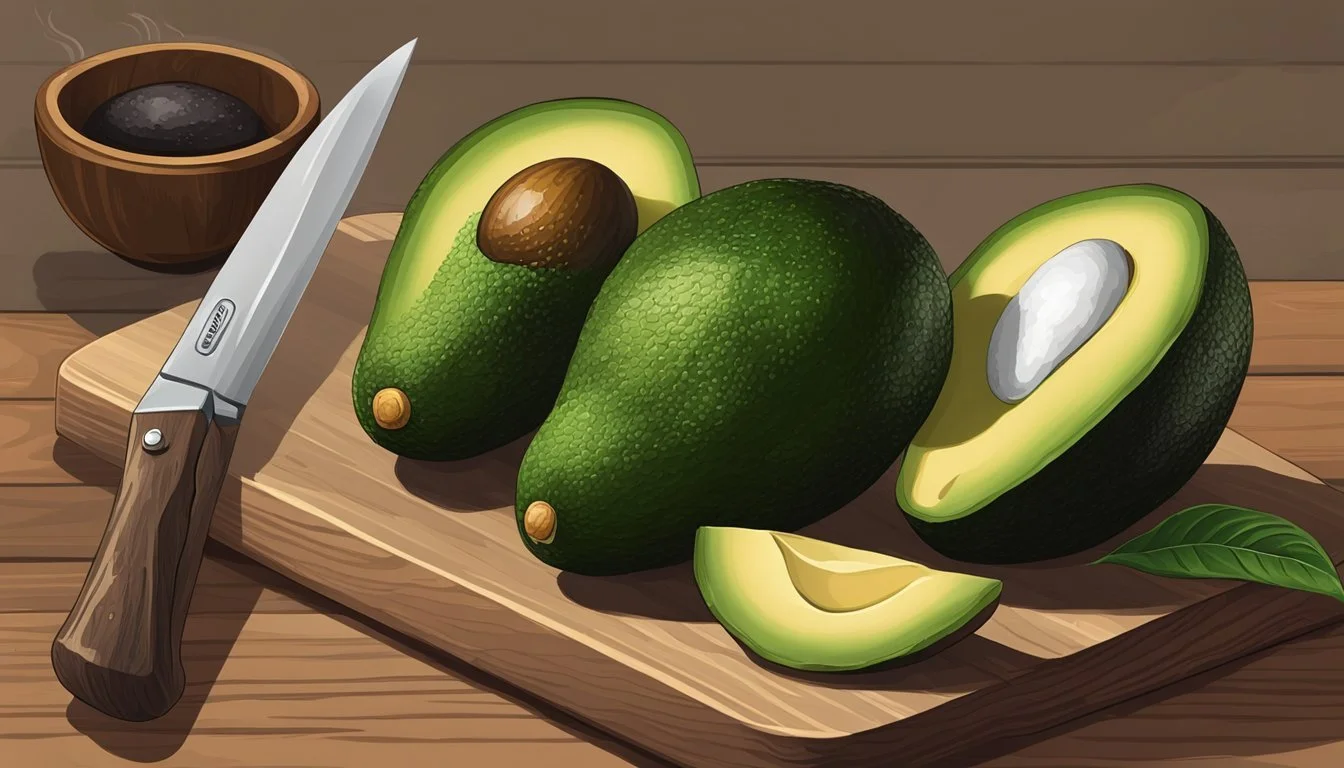How to Tell if Fuerte Avocados Are Ripe
Expert Tips for Perfect Ripeness
Determining the ripeness of avocados is crucial for avocado lovers and culinary enthusiasts. The Fuerte avocado, a variety known for its rich taste and slightly thinner skin compared to the well-known Hass, demands a clear understanding when assessing its maturity. Unlike other fruits, avocados ripen off the tree, and the Fuerte avocado, in particular, requires a span of 2-3 weeks post-harvest to reach the perfect stage of ripeness. Recognizing the right moment to enjoy this variety at its best avoids disappointment and waste, ensuring that every slice yields the creamy, buttery texture and subtle hazelnut notes the Fuerte is celebrated for.
Ripeness in avocados is typically gauged by feel rather than appearance. A ripe Fuerte avocado will yield to gentle pressure when cradled in the palm of the hand without feeling squishy. Overripe avocados, however, may manifest uneven soft spots and discoloration. It is advised to apply light pressure with the whole palm to avoid creating bruises on the fruit. Since the Fuerte is more tolerant of temperature variations and has a relatively firm skin, assessing its readiness for consumption or culinary use with just a visual check is often not enough.
Key Takeaways
A ripe Fuerte avocado yields to gentle pressure while being firm enough to resist squishiness.
Overripe avocados show uneven soft spots and potential discoloration, indicating they are past their prime.
Proper storage and gradual ripening of avocados are key to enjoying the Fuerte variety at its peak texture and flavor profile.
Understanding Avocado Ripeness
To determine if a Fuerte avocado is ripe, one should observe the ripening stages, check visual cues, and use tactile methods.
Stages of Avocado Ripening
Fuerte avocados transition through specific stages of ripeness. Initially, they are firm and light green. As they ripen, they develop a darker green hue and the firmness gives way to a yielding softness upon gentle pressure.
Visual Indicators of Ripeness
A ripe Fuerte avocado exhibits a dark green to brown coloration. Its skin evolves from smooth to a characteristic bumpy texture. These visual indicators aid in identifying the ideal ripe state for consumption.
Tactile Methods to Assess Ripeness
Evaluating the firmness of the avocado provides tactile feedback on its ripeness. A ripe avocado should not feel hard; instead, it should give slightly under pressure. One can gently squeeze the avocado without applying too much force to avoid bruising. If it yields to this light pressure, it is likely ripe.
Specifics of the Fuerte Variety
The Fuerte avocado is a distinct variety known for its unique flavor profile and harvesting season. This section looks at how to identify the Fuerte avocado and provides tips for determining the best times to harvest.
Identifying Fuerte Avocados
Fuerte avocados can be recognized by their size and shape; they are typically medium to large with a pear-like form. The skin of a Fuerte avocado is green, smoother and thinner compared to the rough, thick skin of a Hass avocado. When it comes to texture, the Fuerte's creamy flesh has a high oil content, lending it a rich taste often described as nutty with notes of hazelnut.
Size: Medium to large
Shape: Pear-shaped
Skin: Green, smooth, relatively thin
Flesh: Creamy with high oil content
Taste: Nutty, rich
Fuerte Season and Harvesting Tips
Fuerte avocados have a longer flowering season, which usually spans from early spring to late autumn. The best time for harvesting Fuerte avocados is when they reach a certain size and the skin color turns a slightly darker shade of green. Unlike other varieties, Fuerte avocados do not ripen on the tree, so they should be picked and allowed to ripen off the tree at room temperature.
Season: Early spring to late autumn
Harvesting cue: Size increase and slight darkening of skin color
Ripening: Off the tree at room temperature
How to Tell if Fuerte Avocados Are Ripe
Identifying ripe Fuerte avocados requires close inspection of the stem and skin, feeling for the correct firmness, and noting the changes in color and texture. The following guidelines will help one discern if the Fuerte avocados are at the peak of ripeness for consumption.
Checking the Stem and Skin
Stem: Gently wiggle the small nub or stem at the top of the avocado. If it comes off easily and one sees a green color underneath, the avocado is ripe. If the nub is stubborn and does not detach easily, the fruit likely requires more time to ripen. A brown color beneath the stem indicates over-ripeness.
Skin: Examine the skin for anomalies. While Fuerte avocados retain a green hue when ripe, black spots on the skin can signal over-handling or bruising. Ripe avocados exhibit a skin that is moderately bumpy to the touch.
Feeling for the Right Firmness
Gently cradle the avocado in one's palm, applying light pressure with the base of the fingers. A ripe Fuerte avocado will yield slightly to the pressure, feeling firm but not hard. If the avocado feels mushy or has noticeable indentations after pressure is applied, it is indicative of being overripe.
Observing Color and Texture Changes
Color: Look for a consistent green color across the entirety of the avocado. Fuerte avocados do not darken as much as Hass avocados do when ripe, so one should not expect a black hue.
Texture: Note the skin's texture. Ripe avocados have a noticeable bumpy surface. If the skin feels overly smooth or lacks bumps, the Fuerte avocado may need additional ripening time.
Preventing and Identifying Overripedness
Recognizing when a Fuerte avocado has gone past its prime is crucial to prevent waste and to ensure the best use of the fruit.
Detecting Overripe Characteristics
An overripe Fuerte avocado often exhibits several telltale physical changes. Upon handling, the fruit may feel mushy to the touch, suggesting decay within. The skin color of an overripe Fuerte avocado transitions to a darker tone, but it is the presence of brown, bruised-looking spots or blemishes that more accurately indicates overripeness. These spots can be due to excessive oxidation and pressure damage. When cut open, a brown or darkened flesh, especially around the perimeter or near the seed, is a clear indicator that the avocado is overripe.
Tips to Avoid Wasting Overripe Fruit
While overripe avocados are not ideal for all culinary uses, they can often be salvaged to minimize waste. Quick consumption is recommended once an avocado reaches full ripeness. To extend the life of ripe Fuerte avocados, store them in the refrigerator to slow down the ripening process. If the fruit has become slightly overripe but is not yet inedible, consider using it in preparations like guacamole or avocado spreads where texture is less critical. Any instances of bruising or blemishes can be scooped out, and the remaining good flesh can be used immediately.
Proper Storage and Ripening Techniques
To ensure Fuerte avocados reach their peak flavor and texture, it's crucial to understand how to store and ripen them effectively.
Extending the Shelf Life of Avocados
Storing Fuerte avocados at the correct temperature is essential for maintaining their freshness. Before they ripen, avocados can be stored in the refrigerator to slow down the ripening process, effectively extending their shelf life to about 7-10 days. Once ripe, Fuerte avocados should be consumed within a day or two for optimal taste and texture. If one has cut avocados, they should cover the exposed surface with plastic wrap or immerse in lime juice before refrigerating to prevent browning.
Accelerating the Ripening Process
To ripen Fuerte avocados more quickly, one can use the ethylene gas produced by certain fruits. Placing avocados in a paper bag with a banana, apple, or kiwi can accelerate ripening by trapping the ethylene gas these fruits emit. The bag should be closed tightly and stored at room temperature, and the avocados should be checked daily for ripeness.
Using Ripe Fuerte Avocados in Culinary Creations
Selecting a Fuerte avocado at its peak ripeness is paramount for imparting a rich flavor and buttery consistency to any dish. From simple spreads to complex salads, the versatility of the ripe Fuerte avocado shines through.
Simple Avocado Toast
To prepare Avocado Toast, begin by slicing a ripe Fuerte avocado and spreading it over freshly toasted bread. The creaminess of the avocado is an ideal complement to the toast's crunch. For additional flavor, consider a sprinkle of salt, pepper, and a drizzle of olive oil or a squeeze of lemon.
Ingredients:
1 ripe Fuerte avocado
2 slices of bread
Salt and pepper to taste
Olive oil or lemon juice (optional)
Instructions:
Toast the bread to your preferred level of crispiness.
Slice the avocado and layer it onto the toast.
Add salt, pepper, and optional olive oil or lemon juice.
Creating the Perfect Guacamole
Guacamole is a classic and beloved use of avocados. Start by mashing a ripe avocado with a fork to achieve a desired consistency. Mix in diced onions, tomatoes, and cilantro. Season with lime juice and salt to taste.
Ingredients:
2 ripe Fuerte avocados
1/4 cup diced onion
1/2 cup diced tomatoes
2 tablespoons chopped cilantro
Lime juice (half a lime)
Salt to taste
Instructions:
In a bowl, mash the avocados with a fork.
Stir in the onion, tomatoes, cilantro, lime juice, and salt.
Versatile Recipes Featuring Avocados
Ripe Fuerte avocados can be the star ingredient in a variety of recipes. Incorporate them into salads for a creamy texture, blend them into smoothies for a nutrient boost, or use them as a fresh topping for tacos and burritos. Remember to slice or dice the avocado right before serving to preserve its color and taste.
Recipes Suggestions:
Avocado Salad: Dice the avocado and add to a mixture of fresh greens, cherry tomatoes, and a light vinaigrette.
Avocado Smoothie: Blend avocado with banana, spinach, and your choice of milk for a healthy drink.
By utilizing these methods, ripe Fuerte avocados can be transformed into delightful culinary treats that elevate the overall taste and experience of a meal.
Advanced Tips and Tricks
In this section, we explore meticulous strategies for ascertaining the ripeness of Fuerte avocados without causing waste and share the best practices for serving them with finesse.
Determining Ripeness Without Waste
When dealing with Fuerte avocados, one wants to avoid the disappointment of an unripe fruit or the waste of cutting into an overripe one. There are non-invasive methods to assess the ripeness:
Color: A mature Fuerte avocado typically presents a smooth, green skin that darkens slightly as it ripens.
Firmness: Gently squeezing the avocado should reveal a slight give if it's ripe. It’s important to apply gentle pressure using your palm and not your fingertips to prevent bruising.
Stem Check: Removing the small stem or cap at the top of the avocado can hint at ripeness: a green color underneath indicates ripeness, while brown suggests overripe, and difficult removal signals unripe.
Best Practices for Serving and Presentation
Once a ripe avocado has been identified, the next step is to present it in the most appealing way. Here's how to prepare ripe avocados:
Slicing: Use a sharp knife to slice the avocado lengthwise around the seed, twist the halves apart, remove the seed, and then slice the flesh without cutting through the skin for ease of removal.
Dicing: For diced avocados, make both horizontal and vertical cuts before scooping it out. This technique is excellent for salads or as a topping.
Freezing: To freeze avocados, puree the flesh with a bit of lemon juice to prevent browning, and store it in an airtight container. Sliced or cut avocados can also be frozen on a tray before transferring to a container.
By handling the fruit with care and using these methodologies, one ensures that the avocados are not only ripe but also presented in the most appealing and appetizing manner.
Interesting Facts and Health Benefits
Fuerte avocados offer a rich flavor and nutritional benefits that stand out from other varieties like the popular Hass avocados. Knowing the distinctive qualities of the Fuerte avocado can help consumers make informed choices for their health and palate.
Fuerte Avocados vs. Hass Avocados
Fuerte avocados, a California cultivar, were the forerunners in the commercial market before Hass avocados gained prominence. They are generally larger, with sizes ranging from 8 to 12 ounces and occasionally reaching up to one pound. The skin of a Fuerte avocado is smoother, thinner, and a brighter green compared to Hass avocados, which have pebbled, thicker, and darker skin. While Hass avocados are known for their creamy texture and nutty flavor, Fuerte avocados offer a less oily consistency with a subtly sweet and rich flavor.
Nutritional Value and Health Advantages
Fuerte avocados are a powerhouse of nutrients. They are high in vitamins C, E, K, and B-6, as well as riboflavin, niacin, folate, pantothenic acid, magnesium, and potassium. Here's a concise breakdown of the nutritional content per 100 grams of Fuerte avocado:
Calories: 160
Total Fat: 14.7g
Saturated Fat: 2.1g
Cholesterol: 0mg
Sodium: 7mg
Total Carbohydrates: 8.5g
Dietary Fiber: 6.7g
Sugars: 0.66g
Protein: 2g
Vitamin C: 10mg
Consuming Fuerte avocados supports heart health thanks to their content of monounsaturated fats. They also contribute to maintaining healthy cholesterol levels and are beneficial for eye health due to the presence of lutein and zeaxanthin. Their nutritional profile makes them an excellent choice for those looking to enhance their diet with healthful fats and vitamins while enjoying a flavorful addition to meals.
FAQs on Fuerte Avocado Ripeness
How can one determine if a Fuerte avocado is ripe?
They should gently squeeze the avocado using the palm of their hand. A ripe Fuerte avocado will yield to gentle pressure, feeling slightly soft but not overly squishy.
What are the visual indicators of a ripe Fuerte avocado?
The color of a Fuerte avocado transitions from green to a darker greenish-brown as it ripens. A ripe avocado will often display a slight dulling of skin color compared to its firmer, under-ripe counterparts.
Is firmness a reliable indicator of ripeness?
Yes, it is. An avocado that feels hard to the touch is under-ripe. If it feels very firm, they should allow it to ripen further at room temperature.
Can the ripeness of Fuerte avocados vary even when they look the same?
Absolutely. Avocados might appear similar but can vary in ripeness. They should check for ripeness by touch, not solely by color, as a greener Fuerte avocado could be riper than a brownish one depending on storage and picking conditions.
When do the chances of overripe avocados increase?
If the Fuerte avocado feels quite soft and leaves an indent when squeezed, it may be overripe. Uneven soft spots can also indicate overripeness or internal bruising.
Firmness: Hard
Ripeness Level: Under-ripe
Firmness: Slightly soft to touch
Ripeness Level: Ripe
Firmness: Very soft or squishy
Ripeness Level: Overripe
Using these guidelines, consumers can ascertain the ripeness of Fuerte avocados with confidence and enjoy their rich, hazelnut-like flavor.






